I went to Farmington Bay WMA for the first time since they opened the road past Goose Egg Island this season yesterday and I found a sub-adult Green Heron before the sunlight had reached the valley floor. Green Herons aren’t on the Utah Birds Review List so technically this isn’t a rare bird but they aren’t exactly common here either. This is only the second Green Heron I have seen in the eleven plus years I have lived here and it is the first time I have been able to get photos of this species.
The Green Heron looked like just another clump of duckweed next to the water’s edge in the dim light but it didn’t escape my eyes.
Finding and photographing the Green Heron was great but what was even better was finding and pointing out a lifer bird for a friend.
The four images above are just a few that I grabbed and quickly edited yesterday. The top two were taken before the sunlight reached the spot where the Green Heron was actively hunting for fish in the rushing water. My ISO was high because I needed some shutter speed but my Nikon D500 handles higher ISO’s like a champ and there was very little noise in the full resolution images. I wasn’t sure I was going to like the photos from my first session with this uncommon heron but I do.
The bottom two images were taken after the sun reached the valley floor and after I found the heron for a second time. I took hundreds of images of the Green Heron and I am sure that I will share more sometime in the future but for now four photos is enough.
This Green Heron hasn’t quite obtained its adult plumage and it isn’t a hatch year bird so I have labeled this small heron both immature and sub-adult.
Click on the first image to see the photos at a larger size and to view my techs.
I’ve photographed Green Herons before in Florida and I used to see them frequently in eastern states. It was a thrill to photograph this Green Heron yesterday here in northern Utah.
After finding the Green Heron the second time I also spotted and pointed out a Long-tailed Weasel running around not far from where the Green Heron was hunting for prey. Almost as soon as I got the Long-tailed Weasel in focus in my viewfinder I realized that it was missing an ear. The weasel will be fine. A one-eared Weasel will still be able to hunt, mate and live a normal life.
But having the weasel there while I was photographing the heron meant I was splitting my time looking for the weasel and the Green Heron who had gotten more active and was moving around as it caught fish for breakfast.
I don’t get to photograph Long-tailed Weasels as often as I would like so when I saw the weasel I’d quickly focus on it and when it disappeared onto the marsh I’d switch back to focusing on the heron.
Click on the first image to see the photos at a larger size and to view my techs.
In between the first and second session with the Green Heron and in another part of the WMA I spotted an immature, hatch year, American White Pelican in a small flock that is missing one of its eyes. I noticed the missing eye immediately because where I should have been seeing a dark colored iris all I saw was white. Unlike the one-eared weasel I am concerned about the young pelican. The pelican looked just as healthy as the other young pelicans it was hanging out with so I know that it is able to feed but the missing eye concerns me because it won’t be long before the American White Pelicans here in northern Utah migrate for the winter. First migrations are rough on birds of all species and I wonder how this one-eyed young pelican will do.
Click on the first image to see the photos at a larger size and to view my techs.
It was a terrific “season opener” for me yesterday thanks to my keen observation skills at Farmington Bay WMA with a Green Heron, one-eared Long-tailed Weasel, and a one-eyed American White Pelican.
Life is good.
Mia
Click here to see more of my Green Heron photos, here to see my Long-tailed Weasel images, and here to see more American White Pelican photos.


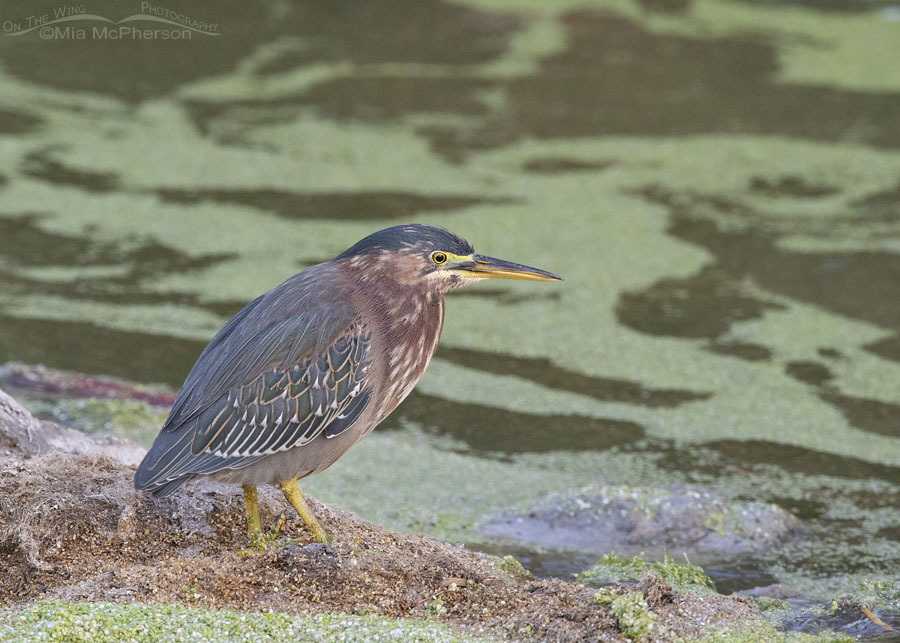
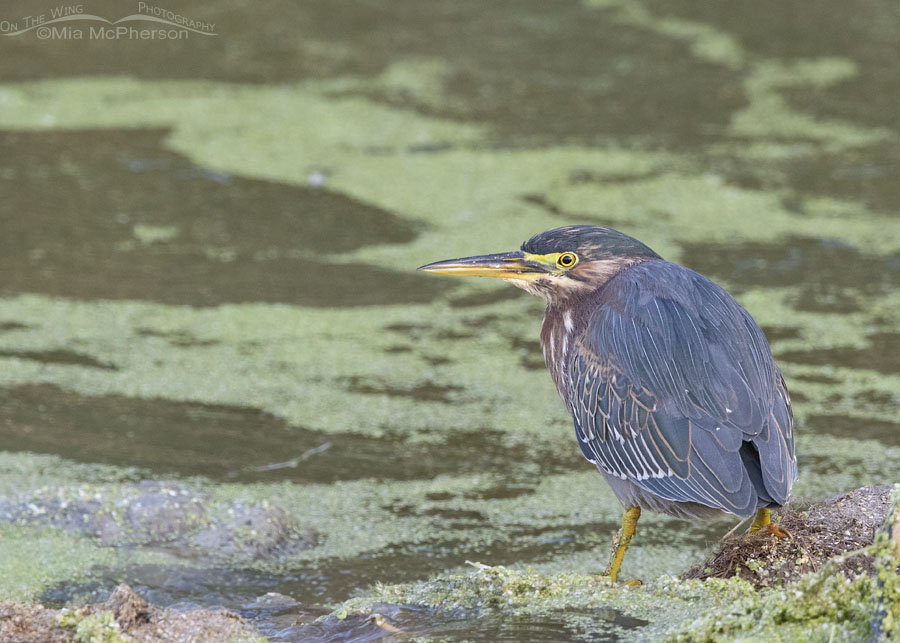
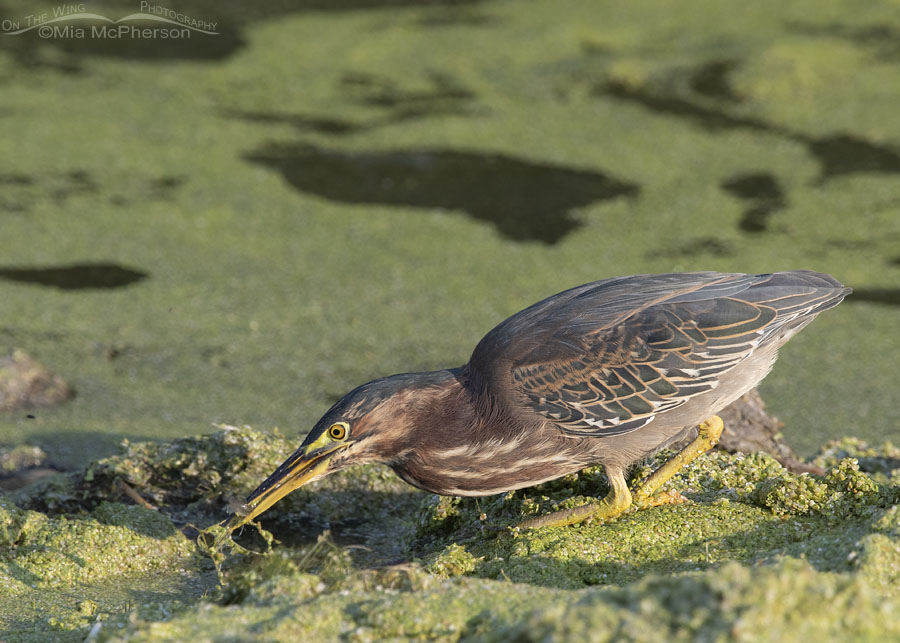
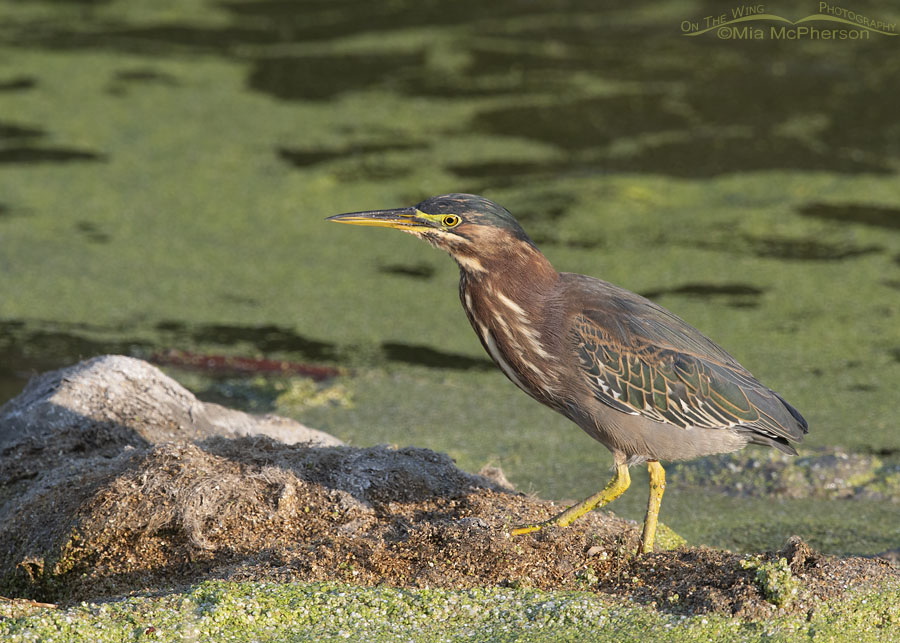
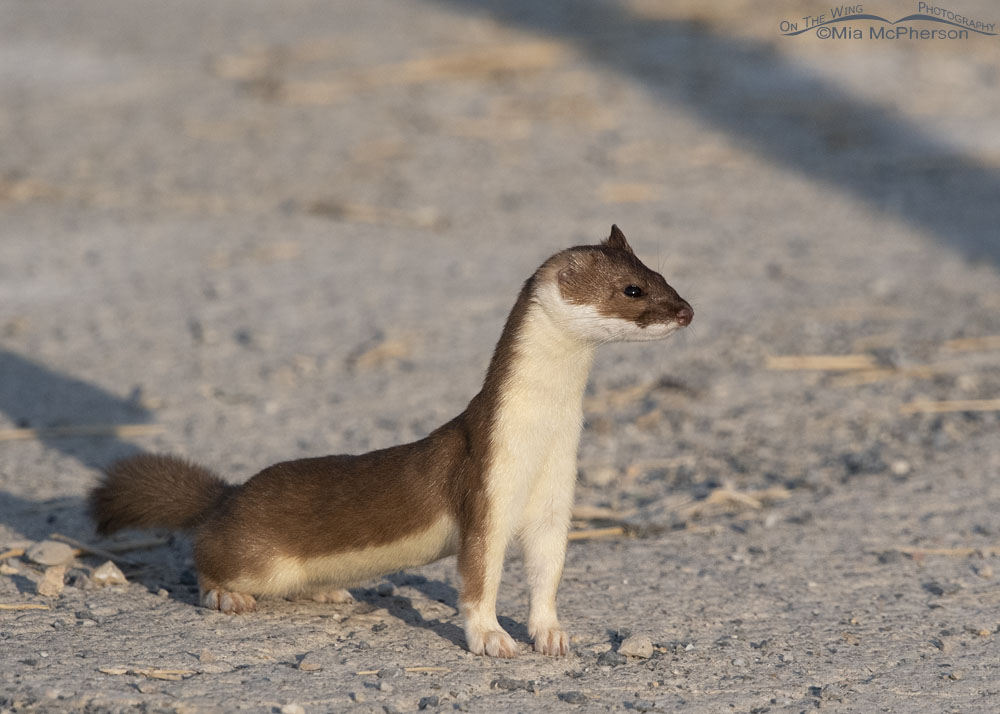
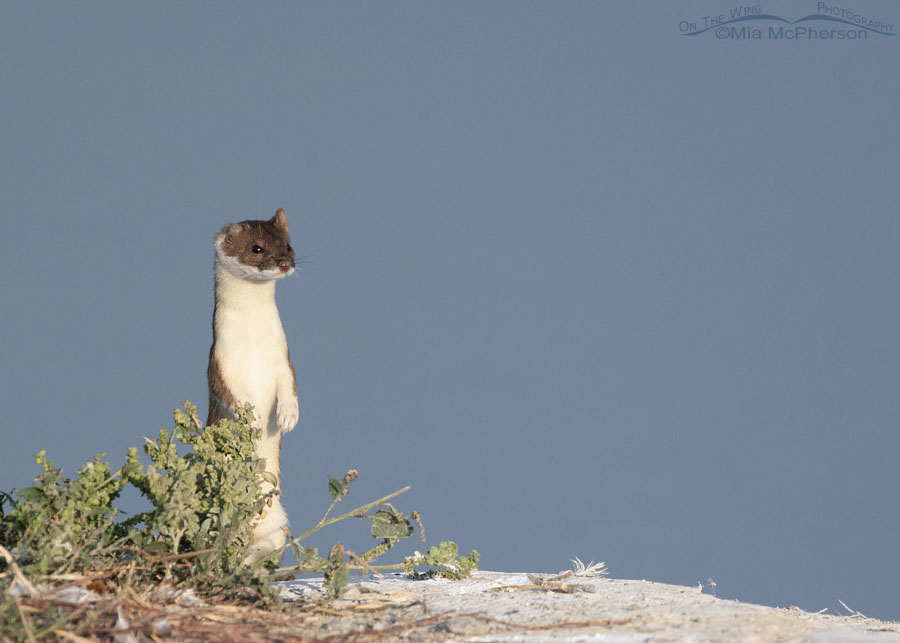
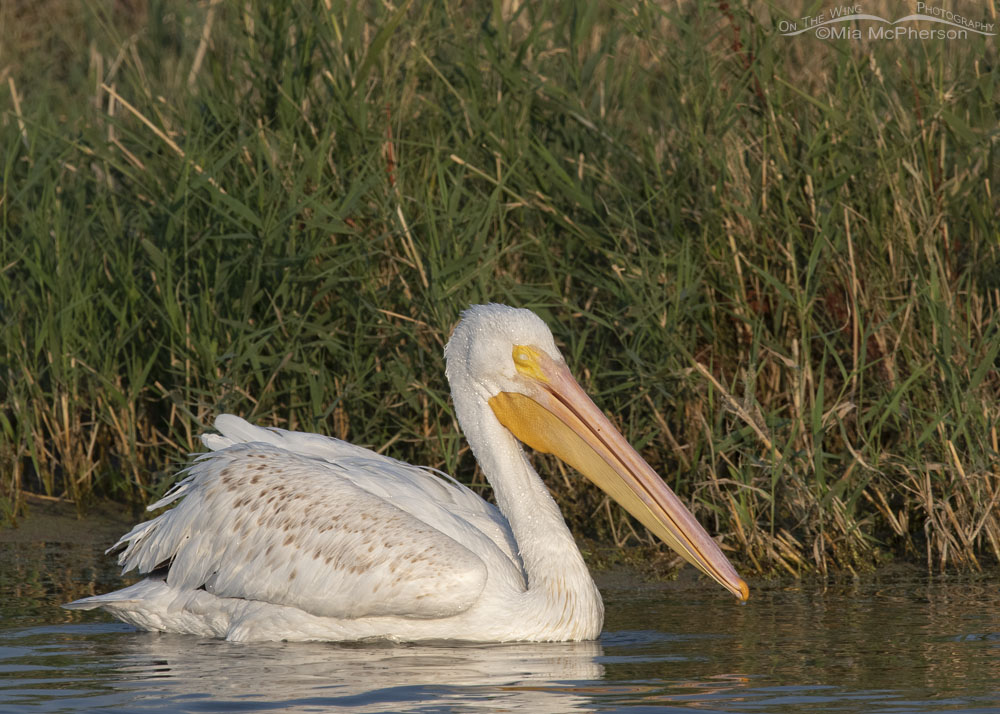
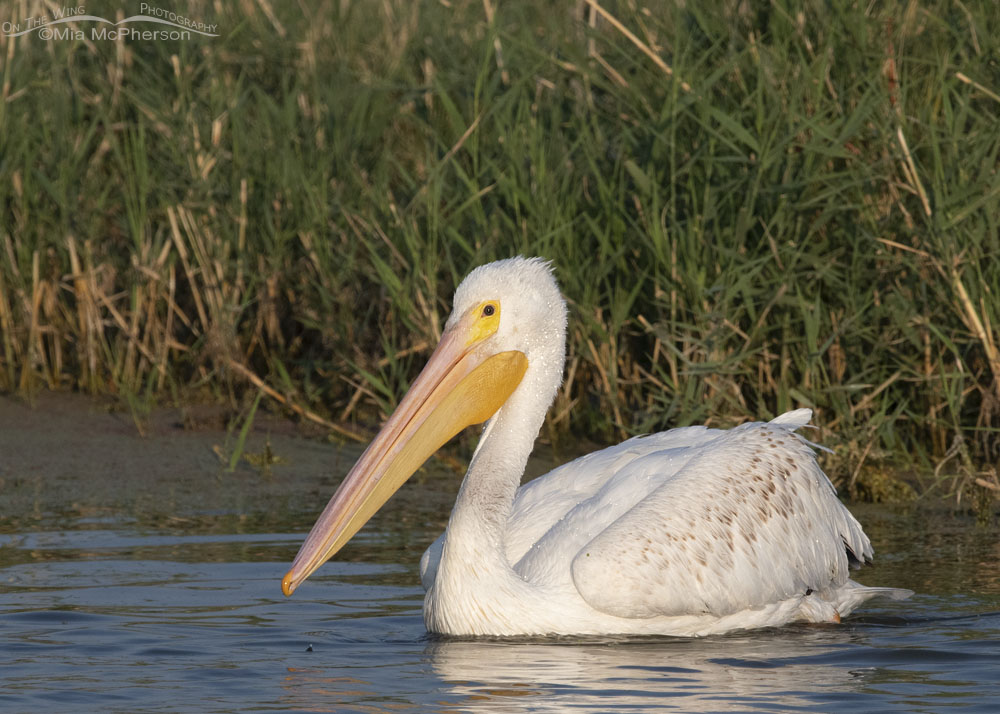
What an intriguing group of shots. I especially love the weasel pics because that is what my wife calls me when I step over the line. Which, I might add, moves a lot. Thanks Mia.
Such wonderful shots, Mia! I envy you your time with all these critters. Interesting coincidence that R eye and R pinna are the missing parts. Keeping fingers crossed for the pelican.
Wonderful, wonderful shots,,,and Great water patterns!
Your usual outstanding work! What birds are coming in for fall? Anything special that you are looking for?
WHAT a morning.
Thank you, thank you, thank you. With hopes for the pelican…
Nice shots of all three subjects. The weasel is a handsome beast, even with one ear. Lacking binocular vision, that pelican will have problems with depth perception, a skill so necessary for their precision flight maneuvers.
Great photos as always. I’m envious of you Weasel shots!
WOW! What a great day of shooting!
Man, I envy you being able to get a portrait shot of the Weasel. Our weasels are very anxious about showing themselves, I only get a quick glimpse of one then its gone!
Gorgeous photos of unique subjects.